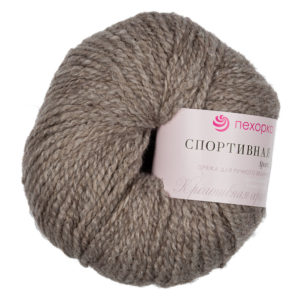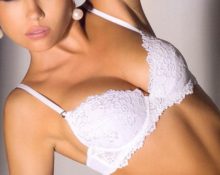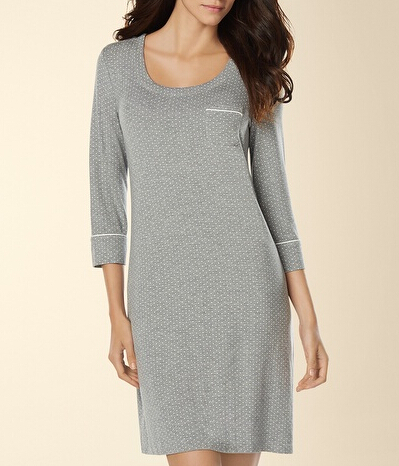Modern life dictates its demands. Nowadays, artificial materials are increasingly used everywhere. After all, they are easily accessible and cheap. All this also applies to the luxury fashion world, where synthesized materials compete with natural ones for a place on the catwalk. And in stores you can see a lot of things made from synthetic fibers. Read on to learn more about all this.
What is pan in knitting threads?
 Just don’t confuse the word PAN with the ancient Greek god in this context. Pan is a chemically synthesized fiber. Its properties resemble wool or angora. Somewhat different from viscose or polyester. The development of such fabrics is carried out by the chemical industry. The raw materials are oil and petroleum products, as well as natural gas and coal. Before they appear in their final form before the buyer, they go through many operations and cleanings.
Just don’t confuse the word PAN with the ancient Greek god in this context. Pan is a chemically synthesized fiber. Its properties resemble wool or angora. Somewhat different from viscose or polyester. The development of such fabrics is carried out by the chemical industry. The raw materials are oil and petroleum products, as well as natural gas and coal. Before they appear in their final form before the buyer, they go through many operations and cleanings.
Additive composition and properties
 In its composition and appearance, pan is similar to natural wool, which is why it is also called synthetic wool. These are soft, light and pliable threads that are not afraid of moths. It should be noted that according to its characteristics, it is a high-quality material that can retain its shape even when subjected to mechanical stress.
In its composition and appearance, pan is similar to natural wool, which is why it is also called synthetic wool. These are soft, light and pliable threads that are not afraid of moths. It should be noted that according to its characteristics, it is a high-quality material that can retain its shape even when subjected to mechanical stress.
It practically does not fade or fade, and is easy to paint. It is thanks to this quality that products made from this material are bright and with rich shades. However, despite all the positive things, the fiber is far from ideal. Pellets appear on it, it is difficult for air to pass through, it loses elasticity under the influence of temperature, and is also prone to greasy stains that are difficult to clean.
How much pan is added to wool?
 Fabrics typically contain 5 to 60 percent pan. In the future, various everyday clothes for children and adults are sewn from these materials, things for the winter period, various special-purpose clothing, voluminous sweaters, sweaters, jackets with fabric sleeves, and hats are made.
Fabrics typically contain 5 to 60 percent pan. In the future, various everyday clothes for children and adults are sewn from these materials, things for the winter period, various special-purpose clothing, voluminous sweaters, sweaters, jackets with fabric sleeves, and hats are made.
The material is introduced into the composition of the threads and mixed with angora, mohair yarn and wool threads. This worsens the properties of natural fiber, but reduces the cost, and strength, on the contrary, increases. If we compare pan and real wool, the first is much worse in its warming qualities.
100% pan - what kind of thread?
In order to understand what qualities a 100% pan has, let’s look at its advantages:
- The fabric is easily dyed, maintaining a magnificent appearance, does not fade or wear out. This is due to the fact that coloring occurs while it is still in liquid form. The color stays inside and easily withstands sun exposure.Now you know for sure that the brightness and durability of the fabric depends not on the dye, but primarily on the technology;
- this material is perfect for sewing clothes;
- the finished product remains in its original form throughout the entire period of use;
- dries quickly;
- not afraid of the appearance of fungus or mold.
The secret to the softness and comfort of wearing products that contain pan is that its properties are similar to those of natural wool. You can wear such clothes even in cold weather, but you won’t overheat in hot weather either.
Pros and cons of this yarn
In addition to all the positive properties that have already been mentioned, we note a few more:
 does not fade in the sun;
does not fade in the sun;- wear resistant;
- after being washed, retains its shape;
- not afraid of temperature changes;
- this is a wrinkle-resistant material;
- it does not cause allergies.
As already mentioned, the material practically does not get dirty. If you need to remove the material for long-term storage, then you don’t have to worry about its safety: it is not affected by any insects, including moths. Naturally, this material also has negative qualities.
First of all, it, like any synthetic material, is electrified. And this quality does not disappear even after it is treated with the addition of fabric softener. To treat it, you need to use an antistatic agent, but this is extremely undesirable, since any of them is toxic. It cannot be used for children's clothes and linen.
Pan absorbs water very poorly, as well as steam. Outerwear is usually made from this material, which is intended for the autumn-winter period.
Subtleties of hair care with pan
This material does not require any special care requirements.Products containing pan can be washed and cleaned with chemicals, the main thing is to follow the recommendations:
 Washing - both machine and hand, preferably in warm water. During the final rinse, add conditioner.
Washing - both machine and hand, preferably in warm water. During the final rinse, add conditioner.- Do not expose the product to too high a temperature, which can cause damage and the material may lose its softness and original shape.
- Do not wring out or dry near heating appliances. It’s better to place it on a flat surface and straighten it out.
- When ironing, it is necessary to place damp gauze on top of the product. Not every pan-based item can be treated with chemicals. To find out exactly about this, you should read the information from the manufacturer, which is indicated on the label.


 does not fade in the sun;
does not fade in the sun; Washing - both machine and hand, preferably in warm water. During the final rinse, add conditioner.
Washing - both machine and hand, preferably in warm water. During the final rinse, add conditioner. 1
1





